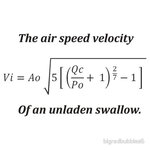.223 and penetration. 62 grn Maker bullet.
Hands up, I muffed this shot. 100 yards standing and the deer was walking. Hit it in the 3rd rib (from the back). Ouch. It staggered and disappeared. My dog tracked it about 150/200 yards. It was alive, but immobile and I quickly dispatched it. Not my most glorious moment.
The interesting thing is that while no vitals were hit in the ordinary sense it was still close to death and incapacitated when I found it (maybe 15 minutes after I shot it).
The bullet had penetrated right through the deer and had expanded well. The internal damage (very yucky) was considerable.
From my experience I doubt a larger caliber would have done any better. Sort of brings into question that bigger calibers allow a greater margin of error.
Here's my dog with the deer just before I called her off to finish it.
View attachment 808334
And here it is to illustrate the cross section of the penetration. I imagine these Fallow deer are the size of a whitetail doe.
View attachment 808335
And here is the exit. Good expansion and exit trauma.
View attachment 808336
I shot 2 other deer the same evening and they were good one shot kills at 300 and 288 yards. One was a reasonably sized Red deer stag. Full penetration in the shoulder and out the front of the paunch. He's in the chiller and I will have a look at the entry and exit when I butcher him.
View attachment 808337









